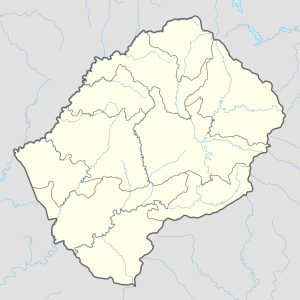유럽 그리드 인프라스트럭처
European Grid Infrastructure | |
| 유형 | 과학적 지원 |
|---|---|
| 산업 | |
| 설립. | 2010 |
| 본사 | 사이언스 파크 140 1098 XG,, 네덜란드 |
서비스 지역 | 유럽 |
주요 인물 |
|
| 수익. | 3,972,057유로(표준) |
| 웹 사이트 | egi |
EGI는 그리드 컴퓨팅 [1]기술을 사용하여 유럽 전역의 높은 스루풋 컴퓨팅 리소스에 대한 접근을 제공하기 위한 일련의 노력입니다.EGI는 많은 과학 분야의 국제 연구를 지원하기 위해 여러 유럽 국가의 센터를 연결합니다.Data Grid, Enabling Grids for E-science 등의 일련의 연구 프로젝트를 거쳐 2010년 EGI [2]재단이 설립되어 EGI의 서비스를 지속하고 있습니다.
목적
과학은 점점 더 전 세계 연구자들 간의 공개적인 협업을 기반으로 하고 있다.대용량 컴퓨팅을 사용하여 복잡한 시스템을 모델링하고 실험 결과를 처리합니다.21세기 초, 그리드 컴퓨팅은 고에너지 물리학과 생물정보학 같은 과학 분야에서 전자 과학으로 [2]알려진 프로세스에서 컴퓨터와 정교하고 종종 독특한 과학 기기의 힘을 공유하고 결합하는 데 인기를 끌었습니다.
2008년 5월 30일, EU 경쟁력 이사회는, 「회원국, 지역, 및 다른 과학 분야와의 통합 메카니즘으로서 e-인프라의 본질적인 역할도, 정보 [3]격차 극복에 공헌하고 있다」라고 촉진했다.
EGI는 EGI-InSPIRE EC 프로젝트에서 부분적으로 지원됩니다.
역사
European DataGrid 프로젝트는 연구 및 기술 개발을 위한 프레임워크 프로그램 시리즈 [4][5]중 하나로 2001년에 3년간 처음 자금을 지원받았다.Fabrizio Gagliardi는 Data Grid의 프로젝트 매니저였으며, 예산은 약 1200만 유로였으며, 전체 프로젝트 이름은 "국제 데이터 그리드를 위한 연구 및 기술 개발"[6]이었습니다.
이 개념의 배경에는 CERN의 LHC([7]Large Hadron Collider) 프로젝트의 방대한 데이터 요구사항이 있었습니다.
EGEE
2004년 4월 1일 유럽 내 E-Science를 위한 EGE(Enabling Grids for E-Science in Europe) 프로젝트는 [8]CERN의 정보기술 부문이 이끄는 정보사회 및 미디어 총국을 통해 유럽 위원회의 자금 지원을 받았습니다.6번째 프레임워크 프로그램의 이 24개월 프로젝트에는 4600만 유로 이상의 비용이 들었습니다.컨소시엄에는 27개국 [8]70개 기관이 참여했다.LHC Computing Grid는 EGE 테크놀로지의 [9]주요 응용 분야였습니다.2006년 4월 1일까지 프로젝트 이름에서 "in Europe"는 삭제되었지만 약어는 E-science용 그리드의 EGE-II로 유지되었습니다.이 2년간의 국면에는 약 5,260만유로의 [10]비용이 들었다.새로운 이름은 말레이시아의 [11]마이크로일렉트로닉스 시스템 협회의 컴퓨터 클러스터와 같은 보다 글로벌한 범위를 반영했습니다.2007년까지 EGI는 36개국에서 [12]지원되었습니다.
gLite라고 불리는 미들웨어 소프트웨어 패키지가 [13]EGE용으로 개발되었습니다.
2008년부터 2010년까지의 3차 2년간의 프로젝트 국면은 EGE-III라고 불립니다.2010년 4월 30일에 EGE 프로젝트가 종료되었습니다.[14]2009년까지 거버넌스 모델은 국가 그리드 이니셔티브(NGI)[15]를 기반으로 유럽 그리드 이니셔티브(EGI)로 발전했다.
관련 프로젝트
근면성과 D4사이언스
2004년 9월 1일부터 2007년 11월 30일까지,[18] 「성실한 그리드 테크놀로지상의 DIGital Library Infrastructure on Grid ENABled Technology(DIGITAL Library Infrastructure on Grid ENABled Technology)」라고[16] 하는 프로젝트에 자금을 투입해, EGE[19] 테크놀로지와 상호 운용 가능한 오픈 소스 소프트웨어를 개발했습니다.이 프로젝트에는 890만 유로가 넘게 들었다.그리드 기반 분산 협업 인프라라고 불리는 후속 프로젝트에는 2009년 [20]말까지 약 390만 유로, 2011년 [21]9월까지 약 540만 유로가 소요되었습니다.이러한 프로젝트는 EGI 서비스와 상호 운용 가능한 D4Science 조직 및 데이터 인프라스트럭처의 개발을 시작했습니다.
베인그리드
BEINGRID(Business Experiments in GRID) 프로젝트는 2006년 6월 1일부터 2009년 11월까지 진행되었으며 비용은 2360만 [22]유로로 추산되었다.이 프로젝트에서는 25개의 [23]도입 사례를 발표했습니다.한 참가자는 2008년에 [24]"업계가 그리드 기술을 꺼리고 천천히 도입하고 있다"고 관찰했습니다.
야임
YAIM은 2007년 [25]CERN에서 개발되었을 때 Yet Another Installation Method로 불렸다.
YAIM은 그리드 서비스를 구성하기 위해 구현되었지만 그리드 미들웨어로부터 독립된 범용 구성 도구일 수도 있습니다.YAIM은 균일한 그리드 사이트를 설정하는 데 사용할 수 있지만 대규모 사이트의 요구에도 쉽게 적응할 수 있는 간단한 구성 방법을 제공하는 것을 목표로 했습니다.로컬 요건에 적응하기 위해 bash 스크립트 세트로 구현되었습니다.EGE의 컴포넌트 기반 릴리스 모델을 지원하기 위해 YAIM 4는 모듈화되었으며 YAIM 코어는 컴포넌트 고유의 스크립트로 보완되어 개별 RPM으로 배포되었습니다.
YAIM의 모듈러 구조를 통해 빠르게 변화하는 그리드 미들웨어의 구성 요건에 맞게 분산 및 비동기식 개발을 수행할 수 있습니다.
그리드 사이트의 아키텍처를 반영하는 계층 구성 스토리지와 구성 가능한 기능 동작은 YAIM의 기본 구성과 함께 로컬 설정을 구현합니다.
설계 연구
EGI 디자인 스터디(EGI_DS) 프로젝트는 2008년 9월에 시작되어 2009년 12월 말까지 계속되었습니다.이 프로젝트는 요건 및 사용 사례 평가, 설립 프로세스 및 메커니즘 확인, 구조 정의 및 조직 [26][27]개시를 위해 유럽 위원회의 7번째 프레임워크 프로그램에 의해 부분적으로 자금을 지원받았다.
이 연구는 디터 크란즈뮐러가 감독했으며 비용은 약 390만 [1][28]유로였다.2008년 10월, EGI의 사이트 선정이 [29]개시되었습니다.참가자들은 37개의 [30]국책 프로젝트를 포함했다.
구조.
2009년 3월, EGI의 정책 위원회는 그것이 네덜란드의 암스테르담에서 과학 공원 [31]암스테르담에서 개최될 것이라고 발표했습니다.EGI.eu 재단은 2010년 [32]2월 8일 암스테르담에서 공식적으로 설립되었습니다.이름 변경에는 일련의 단기 연구 프로젝트에서 보다 지속 가능한 [33]서비스로 전환되는 것을 반영하기 위해 인프라를 약어의 세 번째 단어로 사용하는 것이 포함되었습니다.
National Grid Initiates(NGI)는 개별 국가 내 계산 자원에 대한 과학 분야를 지원합니다.EGI는 각 회원사의 대표자 평의회에 의해 관리되며, 이 위원회는 NGI 간의 국제협력을 관리하는 이그제큐티브를 관리하여 개별 연구자가 국제협동연구 프로젝트에서 컴퓨팅 자원을 공유하고 결합할 수 있도록 한다.
국가 그리드 이니셔티브의 협력을 조정하는 EGI의 거버넌스 모델은 유럽 연구 영역에서 채택된 일반적인 협력 및 보조 정책을 사용한다.
유럽 연구를 위한 EGI-Integrated Sustainable Pan-European Infrastructure(EGI)라는 3200만 유로 규모의 프로젝트.인스피어)는 Steven [34]Newhouse의 지시로 2010년 9월에 자금 지원을 받았습니다.E-ScienceTalk라고 불리는 150만 유로 규모의 프로젝트는 EGI를 [35]다루는 웹사이트와 출판물을 지원하기 위해 33개월 동안 자금이 지원되었다.그것은 2008년부터 [36][37]2010년까지 자금 지원을 받은 GridTalk라고 알려진 이전 프로그램을 따랐다.
「 」를 참조해 주세요.
레퍼런스
- ^ a b Christopher Lazou (14 April 2008). "Grid Infrastructure Organization". European Parliament Magazine. Vol. 265. pp. 8–9. Retrieved 2 October 2011.
- ^ a b "History of EGI". EGI.eu website. Archived from the original on 2 March 2012. Retrieved 4 October 2011.
- ^ 유럽경쟁력평의회, 유럽연구인프라스트럭처와 그 지역차원에 관한 결론, 브뤼셀, 2008년 6월 3일
- ^ "EGEE‐III Project Publishable Summary" (PDF). Enabling Grids for E-sciencE. 8 June 2010. Archived from the original (PDF) on 6 April 2013. Retrieved 2 October 2011.
- ^ "The DataGrid Project". CERN. March 2004. Retrieved 2 October 2011.
- ^ "Research and Technological Development for an International Data Grid". Project IST-2000-25182 description. European Community Research and Development Information Service. Retrieved 7 October 2011.
- ^ Robert J. Wilson (22 October 2001). "The European DataGrid Project" (PDF). Snowmass 2001. American Physical Society. Retrieved 2 October 2011.
- ^ a b "Enabling grids For E-science". Project description. European Community Research and Development Information Service. Retrieved 2 October 2011.
- ^ LHC Computing Grid: Technical Design Report (PDF). document LCG-TDR-001, CERN-LHCC-2005-024. The LCG TDR Editorial Board. 20 June 2005. ISBN 92-9083-253-3. Retrieved 3 October 2011.
- ^ "Enabling grids for E-sciencE-II". Project description. European Community Research and Development Information Service. Retrieved 2 October 2011.
- ^ Jo Timbuong (24 April 2008). "Computer grid grows in power". The Star Online. Kuala Lumpur. Archived from the original on 13 July 2012. Retrieved 2 October 2011.
- ^ Leena Jukka (5 September 2007). "36 national grids initiatives in Europe support the EGI concept". Innovations Report. Retrieved 3 October 2011.
- ^ "gLite – Lightweight Middleware for Grid Computing". CERN. Retrieved 3 October 2011.
- ^ "EGEE Portal: Enabling Grids for E-sciencE". Official web site. Archived from the original on 19 June 2010. Retrieved 2 October 2011.
- ^ "ICT Infrastructures for e-Science". Communication from the Commission to the European Parliament, the Council, the European Economic and Social Committee of the Regions. Brussels. 5 March 2009. Retrieved 2 October 2011.
- ^ "Diligent Project". Defunct website. Archived from the original on 4 November 2008. Retrieved 3 October 2011.
- ^ "A testbed digital library infrastructure on grid enabled technology". Project description. European Community Research and Development Information Service. Retrieved 3 October 2011.
- ^ Candela, L.; Akal, F.; Avancini, H.; Castelli, D.; Fusco, L.; Guidetti, V.; Langguth, C.; Manzi, A.; Pagano, P.; Schuldt, H.; Simi, M.; Springmann, M.; Voicu, L. (2007). "DILIGENT: integrating digital library and Grid technologies for a new Earth observation research infrastructure". International Journal on Digital Libraries. 7 (1–2): 59–80. doi:10.1007/s00799-007-0023-8. S2CID 29730933.
- ^ Assante, M.; Candela, L.; Castelli, D.; Cirillo, R.; Coro, G.; Frosini, L.; Lelii, L.; Mangiacrapa, F.; Marioli, V.; Pagano, P.; Panichi, G.; Perciante, C.; Sinibaldi, F. (2019). "The gCube system: Delivering Virtual Research Environments as-a-Service". Future Generation Computer Systems. 95: 445–453. doi:10.1016/j.future.2018.10.035.
- ^ "DIstributed colLaboratories infrastructure on Grid enabled technology 4 science". Project description. European Community Research and Development Information Service. Retrieved 3 October 2011.
- ^ "Data Infrastructure Ecosystem for Science". Project description. European Community Research and Development Information Service. Retrieved 3 October 2011.
- ^ "Business experiments in GRID". Project 034702 fact sheet. European Community Research and Development Information Service. Retrieved 9 October 2011.
- ^ "Business Experiments in Grid: BEinGRID". Project web site. European Community Research and Development Information Service. Archived from the original on 23 July 2011. Retrieved 9 October 2011.
- ^ Claire Gresty; George Thanos; Theo Dimitrakos; Paul Warren (January 2008). "Service oriented infrastructure: Meeting customer needs". BT Technology Journal. 26 (1). Retrieved 9 October 2011.
- ^ "YAIM 4 reference guide" (PDF). CERN. 30 August 2007. Retrieved 3 October 2011.
- ^ "European Grid Initiative Design Study". Official website. 2009. Archived from the original on 20 September 2011. Retrieved 2 October 2011.
- ^ "Europeans connecting through the Grid". European Research Headlines. European Commission. 14 September 2007. Retrieved 3 October 2011.
- ^ "European grid initiative design study". Project 211693 description. European Community Research and Development Information Service. Retrieved 2 October 2011.
- ^ "Euroopan grid-organisaatio hakee kotipaikkaa". Digitoday (in Finnish). 17 October 2008. Retrieved 2 October 2011.
- ^ "Scientists join forces to create European grid computing infrastructure". News release. European Community Research and Development Information Service. 25 September 2007. Retrieved 2 October 2011.
- ^ "European Grid Initiative Head Office comes to Science Park Amsterdam". News release. University of Amsterdam. 23 March 2009. Retrieved 2 October 2011.
- ^ Rob van der Meer (11 February 2010). "EGI.eu founded". News release. EGI.eu. Archived from the original on 5 March 2012. Retrieved 3 October 2011.
- ^ "Establishing EGI.eu". Projects. British Publishers. p. 26. Retrieved 3 October 2011.
- ^ "Work on pan-European grid infrastructure moves to next level". News release. European Community Research and Development Information Service. 16 September 2010. Retrieved 2 October 2011.
- ^ "e-ScienceTalk: Supporting Grid and High Performance Computing reporting across Europe". Project 260733 summary. European Community Research and Development Information Service. 1 September 2010. Retrieved 4 October 2011.
- ^ "GridTalk: co-ordinating grid reporting across Europe". Project 223534 summary. European Community Research and Development Information Service. 1 May 2010. Retrieved 4 October 2011.
- ^ "About GridTalk". Official website. 2010. Archived from the original on 25 April 2012. Retrieved 4 October 2011.




